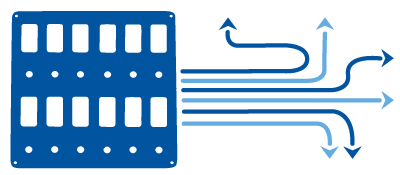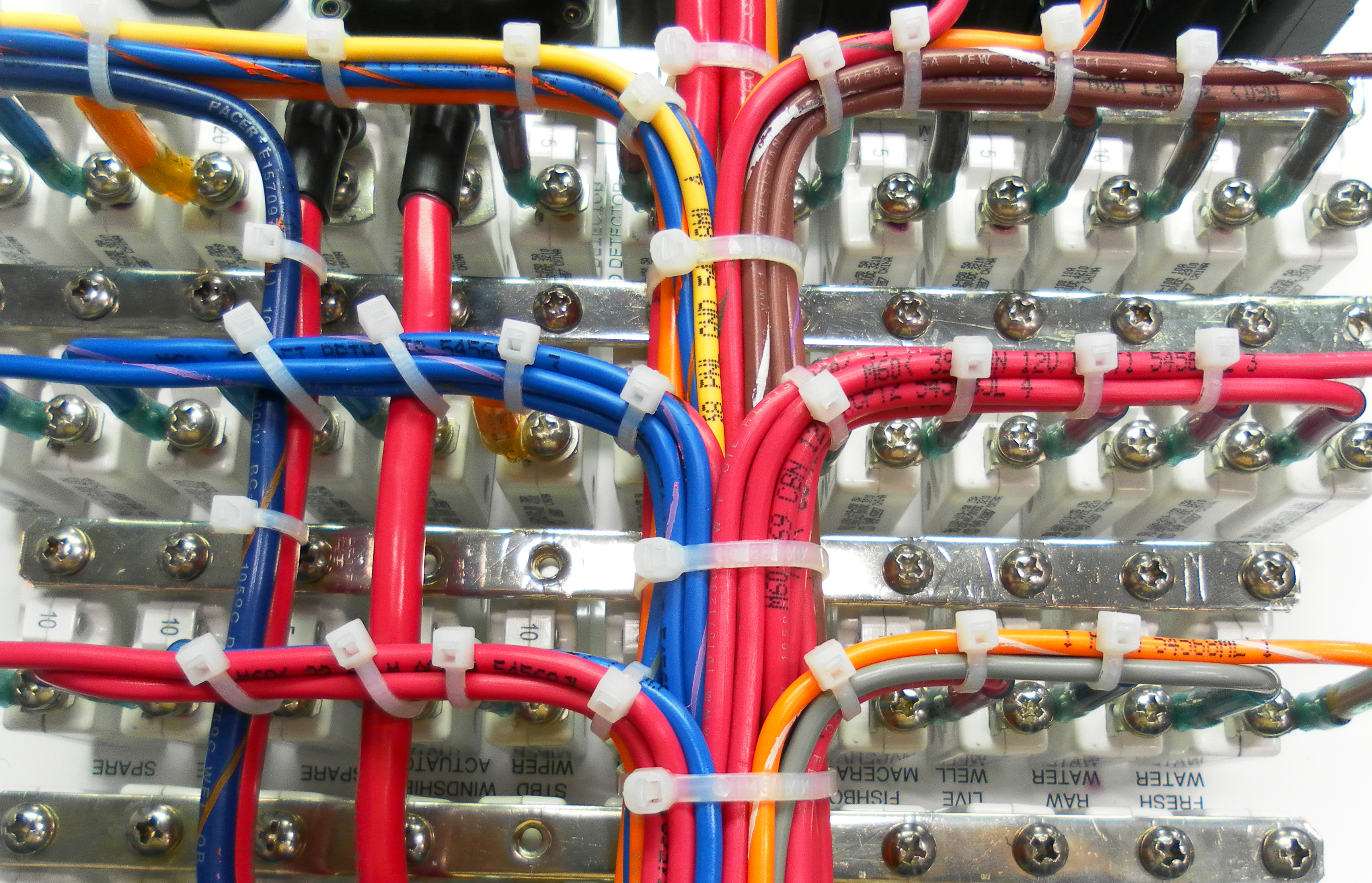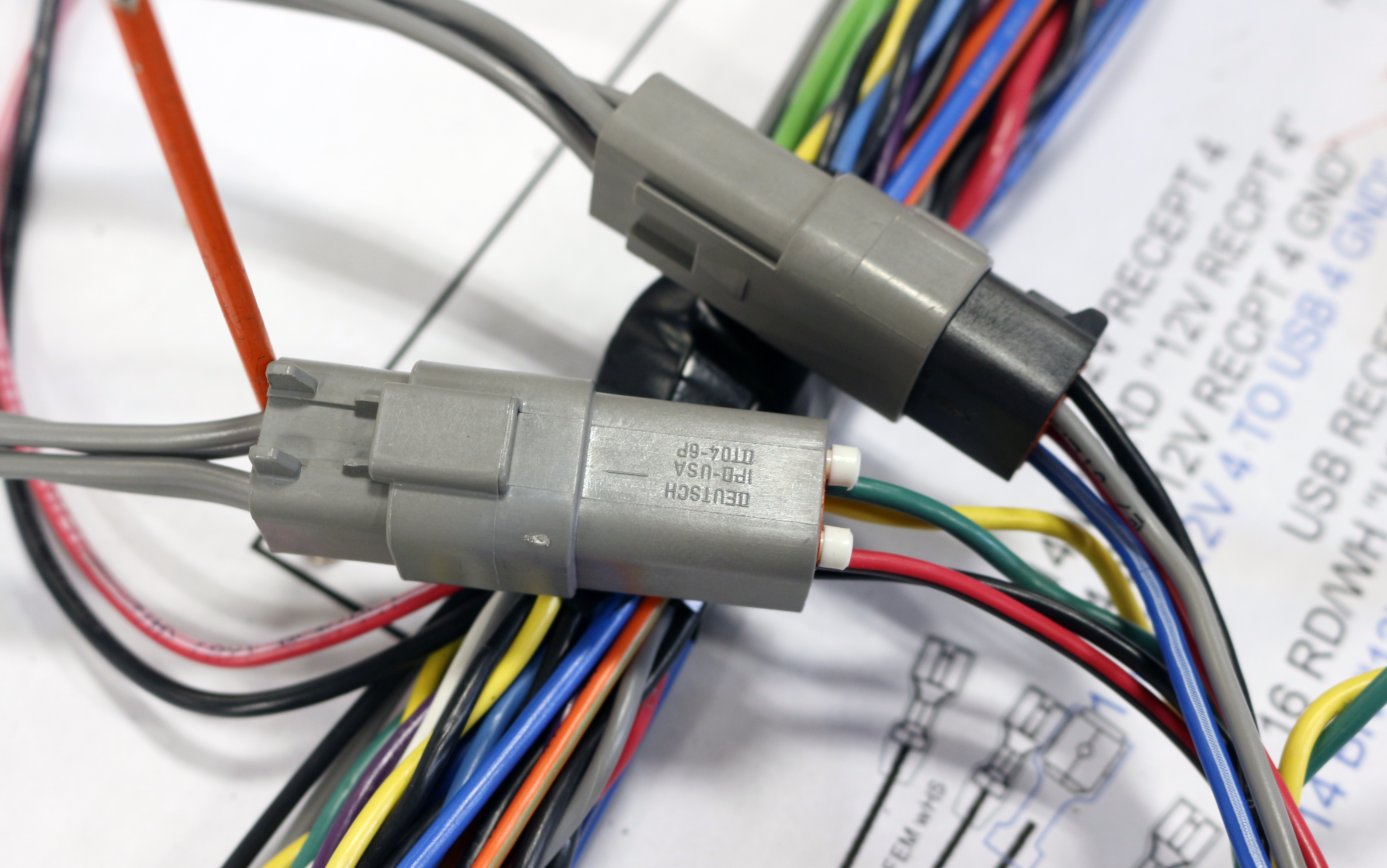What’s Behind Your Panel?
Posted by Pacer on 12th Jan 2021

Marine Wire, Deutsch Connectors, and other electrical components
Why would I ever need to remove a panel?
There is a wide range of reasons in which you may need to remove a panel. You may be looking to add a new switch or replace an existing one. Or perhaps you want to trace a marine wire from the panel to its destination. You may need to install a Deutsch connector or maybe you just need to get to an otherwise inaccessible area of the boat’s interior. No matter the reason for removing a panel, the ins and outs may very well be the same. It’s important to have a clear understanding of what to expect and what to do once you actually remove the panel itself.
"No matter the reason for removing a panel, the ins and outs may very well be the same."
What do I need to know before I start removing a panel?

Before you start removing a panel the most important thing to know is that any changes that you make could have a profound impact on the way your boat functions. Now, I am not attempting to scare you away from removing the panel. Instead, I’m trying to give you a realistic idea of what to expect. If you go unplugging things from the back of the panel and plug them back in incorrectly or in the wrong location, you will definitely run into issues. The best advice is to move slowly and disconnect one thing at a time. One great method is to photograph the backside of the panel before removing any wires or parts so that you have a reference when you go to reassemble everything. This can be very useful as there are a lot of parts and wires on the back of a panel.
 PRO TIP: Photograph the backside of the panel before removing any wires so that you have a reference when you reassemble everything.
PRO TIP: Photograph the backside of the panel before removing any wires so that you have a reference when you reassemble everything.
Why are they so many wires?

The reason you see so many wires on the back of a panel is that the panel itself is connected to what is known as the wire harness. The wire harness is a collection of marine wire and cable that runs from one end of the boat clear to the other end and connects all of the individual pieces of equipment together.
Some of these harnesses are longer than a school bus and can have one hundred or more wires and cables. This is why I emphasized the impact that making changes can have on your system. Altering one part of your panel can affect the entire harness if you are not careful in what you do. You may notice that your wire harness has a lot of different types of wires and there is a good reason for this.
Why is there stripped marine wire and solid color marine wire?
On older boat models, you will see a lot of what is know as stripped marine wire. This type of marine wire carries a colored stripe across the insulation to help to distinguish it from other wires. So, you may have a blue wire with a white stripe and a blue wire with a yellow stripe and so on. Older boats used this type of wire method to easily identify where a wire went and what its intended purpose was. As time went on, manufacturers moved away from stripped marine wire and instead began using marine wire with the important information printed directly onto the wire jacket itself. This makes it easier than ever to identify a wire's purpose. All you need to do is find the print where it may say something like; bilge pump, or speaker. So, if you have a newer boat, you will see less stripped marine wire, if any, and more solid color marine wire with details printed on it.

Stripped Wire
Solid Color Wire
What are the connectors on the ends of the wires?

In order for the wires to carry the electric signal to the intended location, they need a point of connection. That is to say, they need a way to connect to the various pieces of equipment. Many manufacturers, our selves included, utilize environmentally sealed connectors such as Deutsch connectors. Deutsch connectors create a durable waterproof seal that is designed to handle the toughest marine environments out there. By using Deutsch connectors, manufacturers are able to create systems that are essentially “plug-and-play”. Your entire panel may be wired into a single Deutsch connector. How convenient is that? If that is the case, you would only need to disconnect that one point in order to fully remove the panel itself. The use of Deutsch connectors also removes the chance of improper connection as they can only plug together one way.
Some final advice
If you are inexperienced with boat wiring, or wiring in general, it is probably a good idea to enlist the aid of a professional before you get started. A professional can show you the ins and outs involved and give you a solid foundation to build on. If you only want to replace a switch, you can most likely handle that as long as you take your time, pay attention, and play it safe. If you intend to install a Deutsch connector or replace some marine wire make sure that you know what you are doing before you begin.

